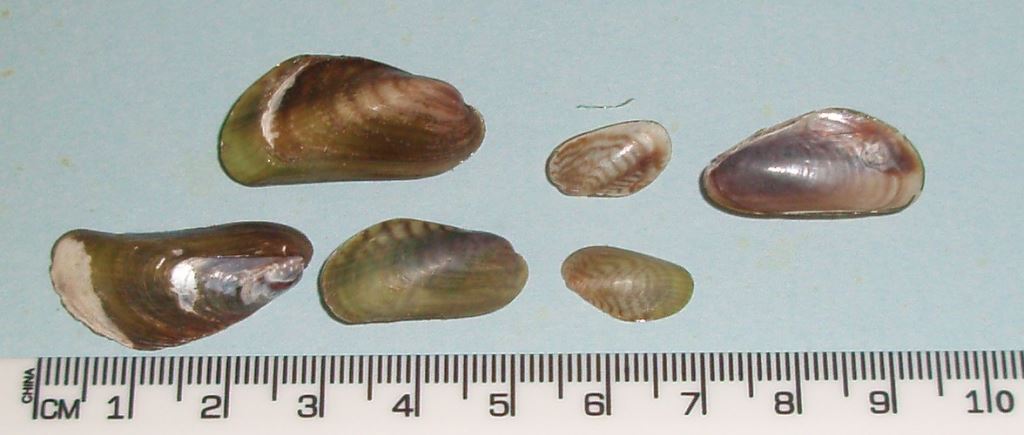Aquatic pests: marine and freshwater
Asian bag mussel
The Asian bag mussel is considered a pest in the Northern Territory (NT). It multiplies quickly and grows into extremely dense mats of up to 15,000 mussels per square metre on the sea floor.
It grows fast, has a short lifespan and spreads easily. It can smother native marine life and remove oxygen from the underlying seabed.
The Asian bag mussel is not currently found in the NT and if you find any you must report it. Read how to report aquatic pests.
What it looks like
Size
A small mussel that reaches a maximum length of around 30mm.
Colour
It is olive-green to brown, with darker radial lines or zig-zag markings.
Shell
It is thin with a smooth surface.
Where it lives
It can be found from the intertidal zone to depths up to 20m in a wide range of temperatures.
It grows densely on soft sand and mud and on hard surfaces like vessel hulls and wharf pylons.
It prefers to settle in groups on sand or mud where it burrows vertically, leaving only its end protruding.
History of Asian bag mussel
It is native to the north western Pacific - from Siberia and the Kuril Islands through to Korea, Japan, China and Singapore.
It was introduced to the Pacific coast of the US (1940s), New Zealand (1970s), Australia (1980s) and the Mediterranean (1980s).
It is thought there are two strains of the species - one tropical and one temperate.
It was first recorded in Australia in the Swan River, Western Australia, in the early 1980s.
It became established in Victoria in the late 1980s and is now found in Port Phillip Bay, Western Port Bay and Portland Harbour. In 1995 it was reported in the Tamar River, northern Tasmania.
Print all pages in this section
Give feedback about this page.
Share this page:
URL copied!

